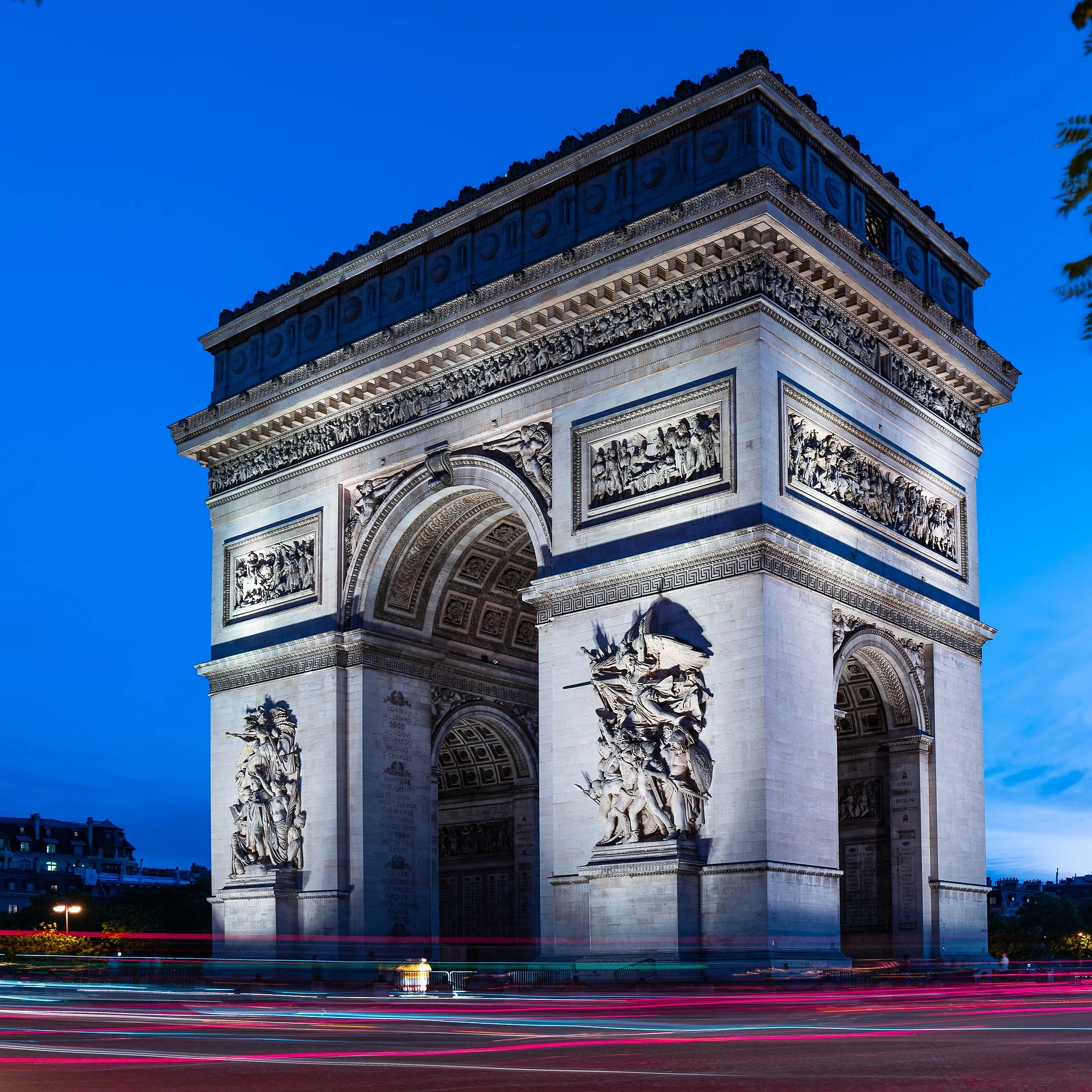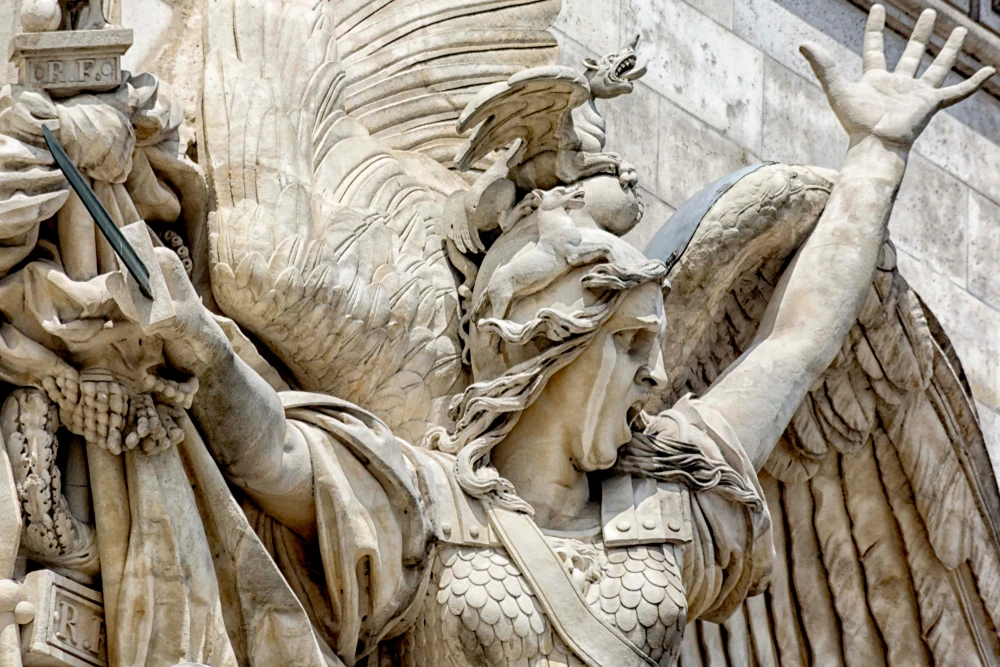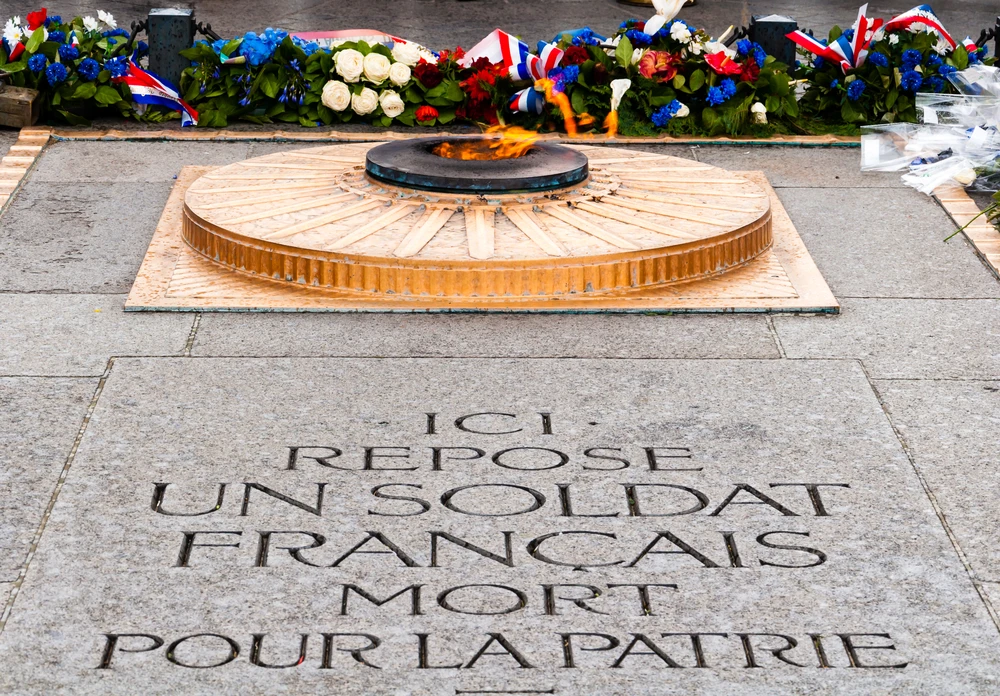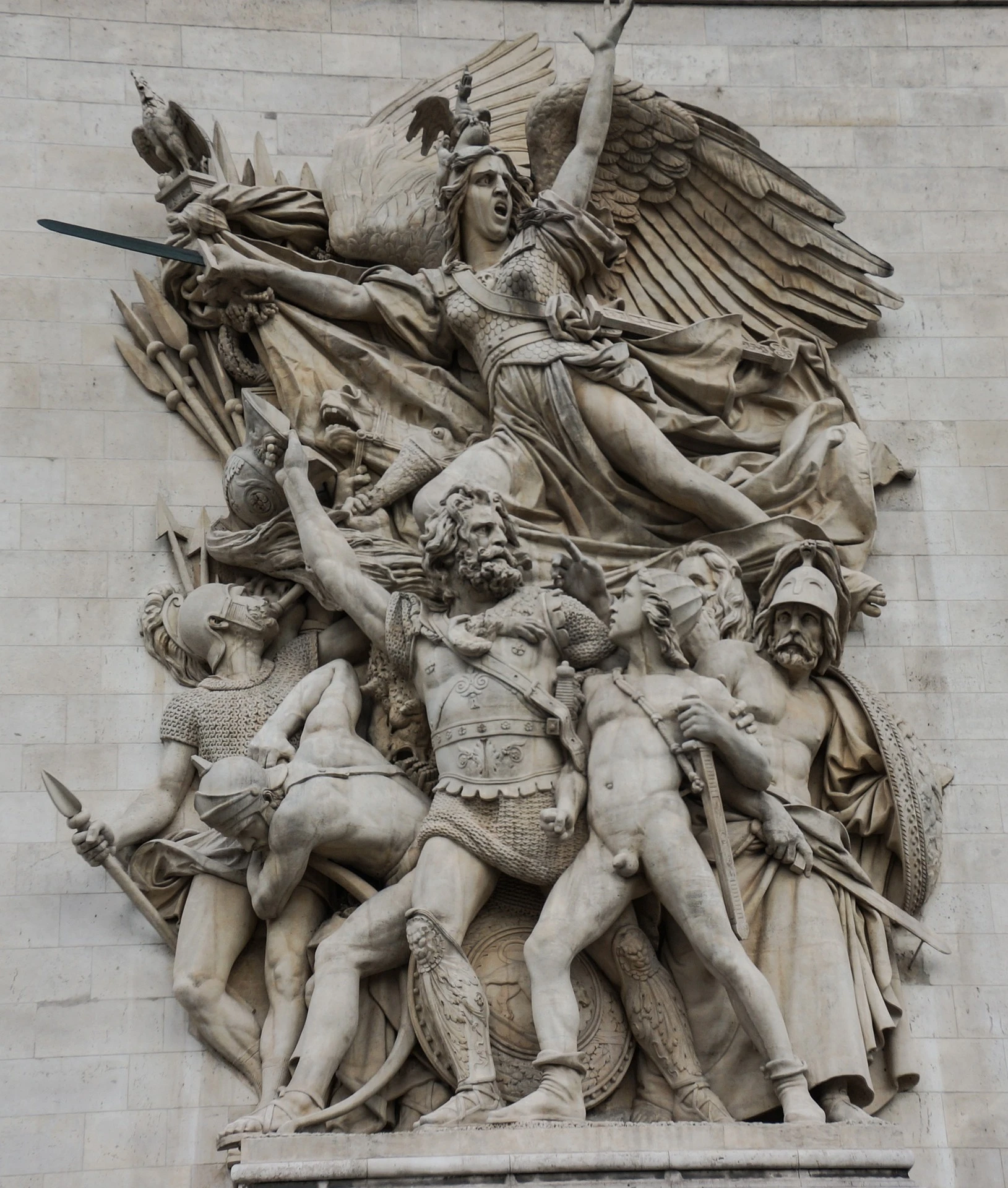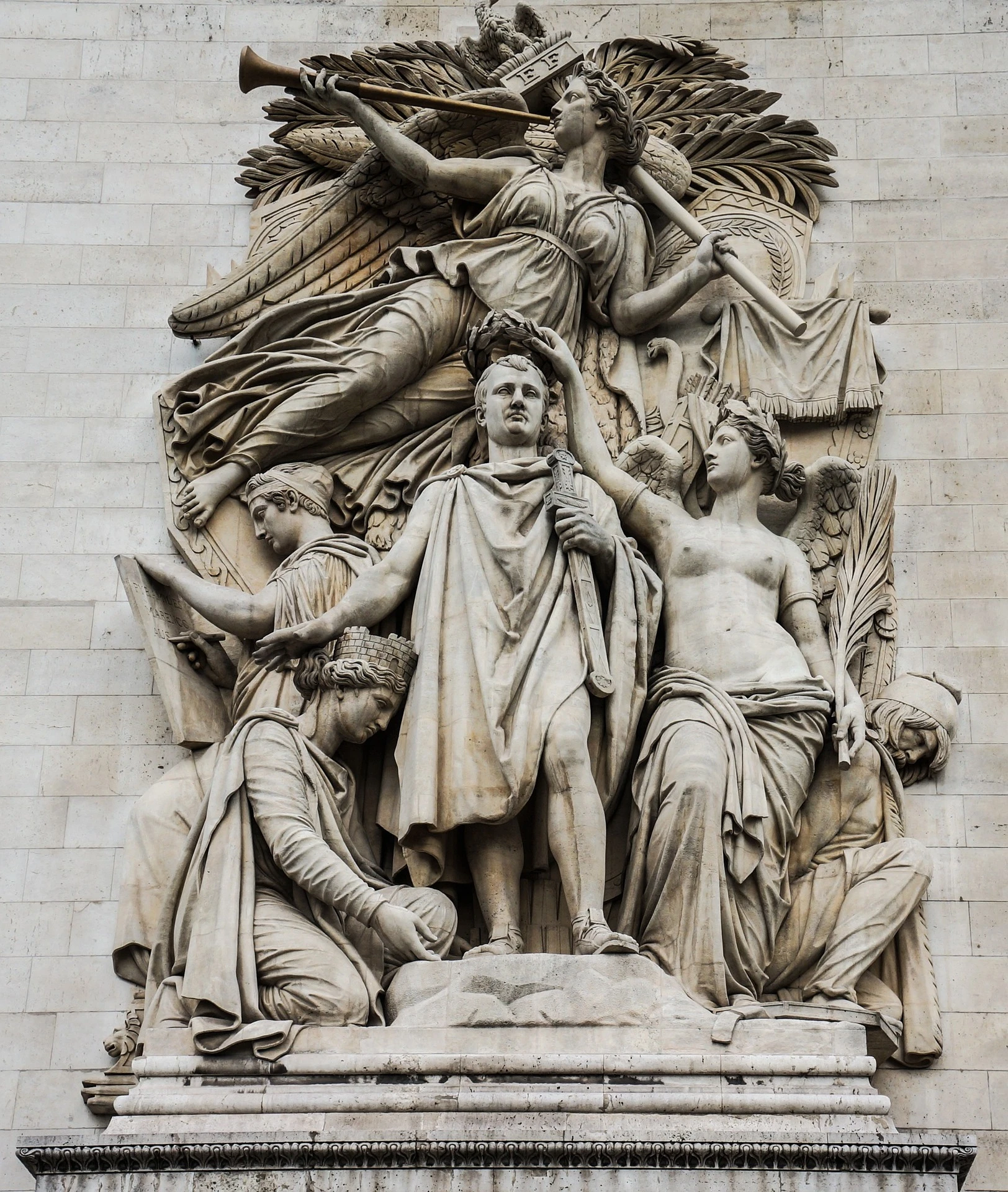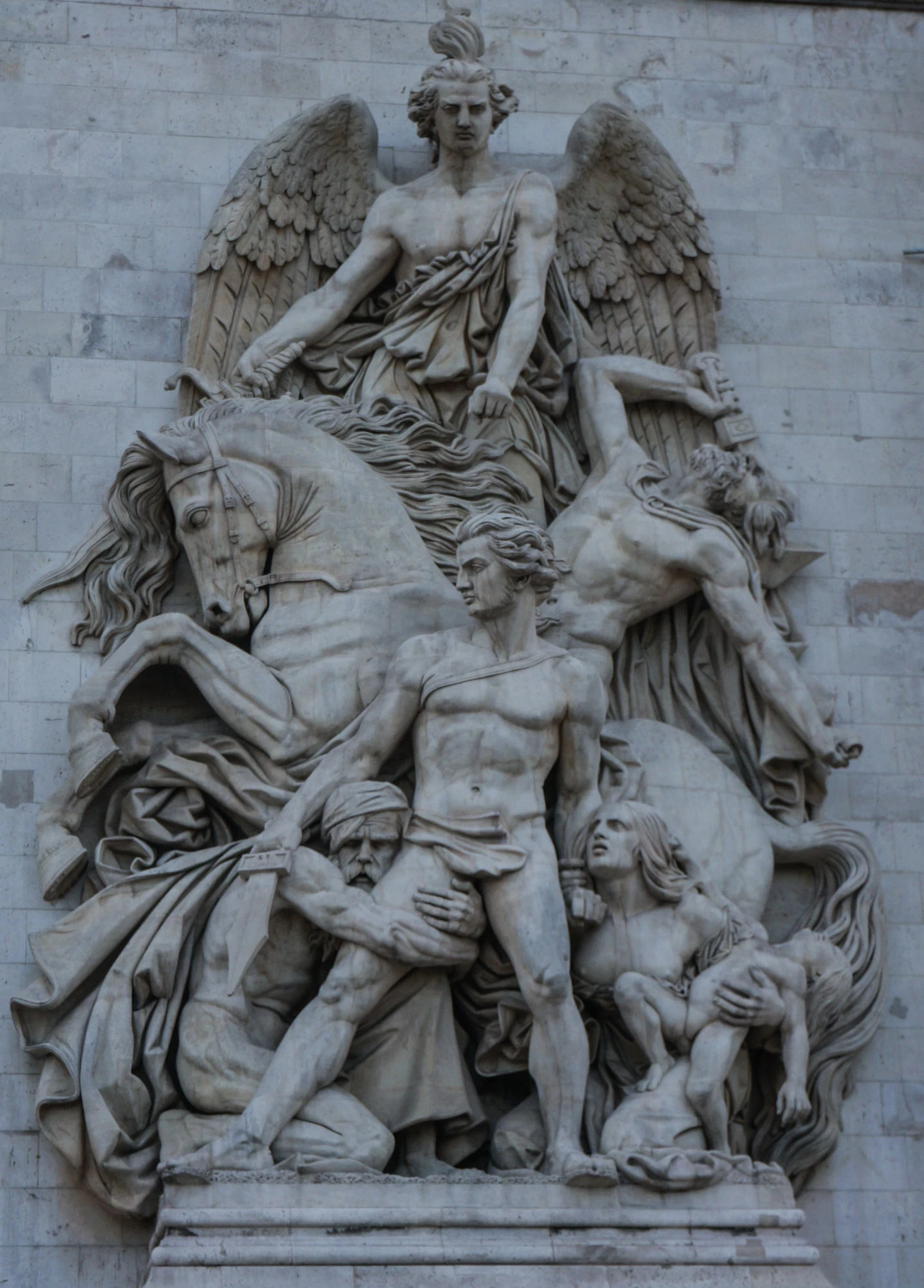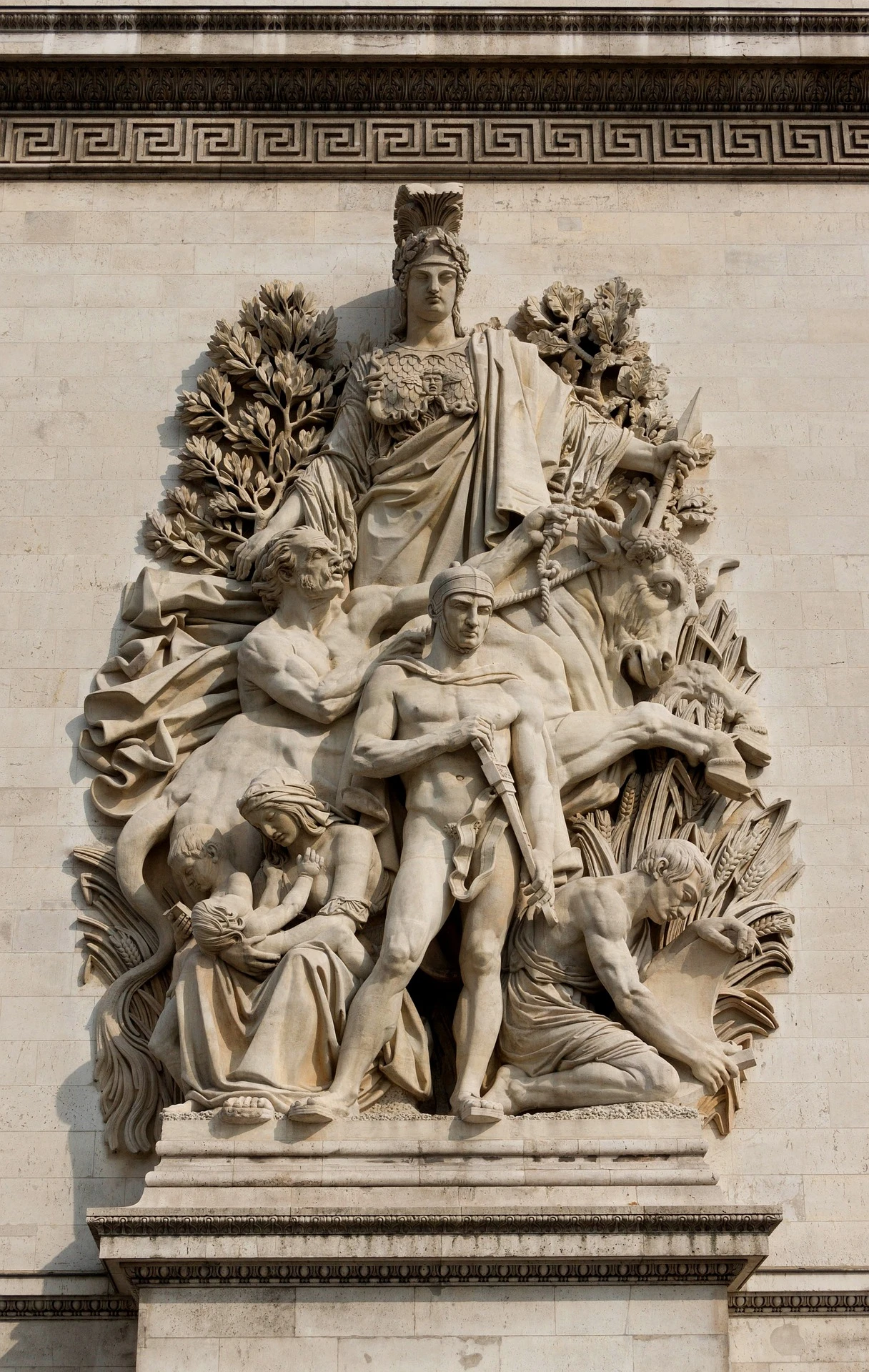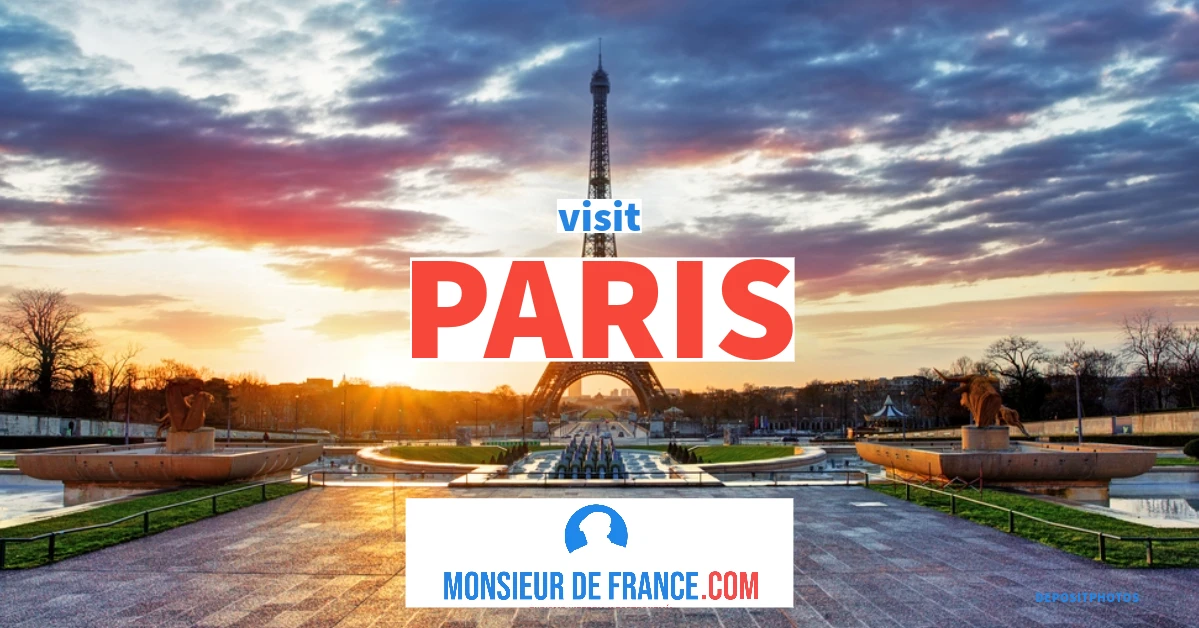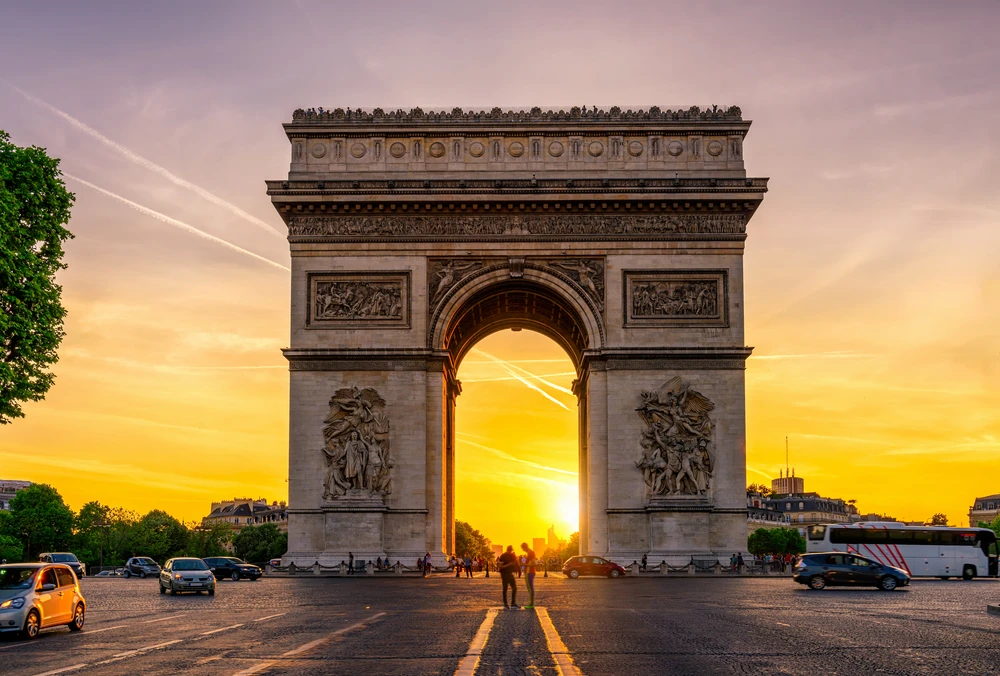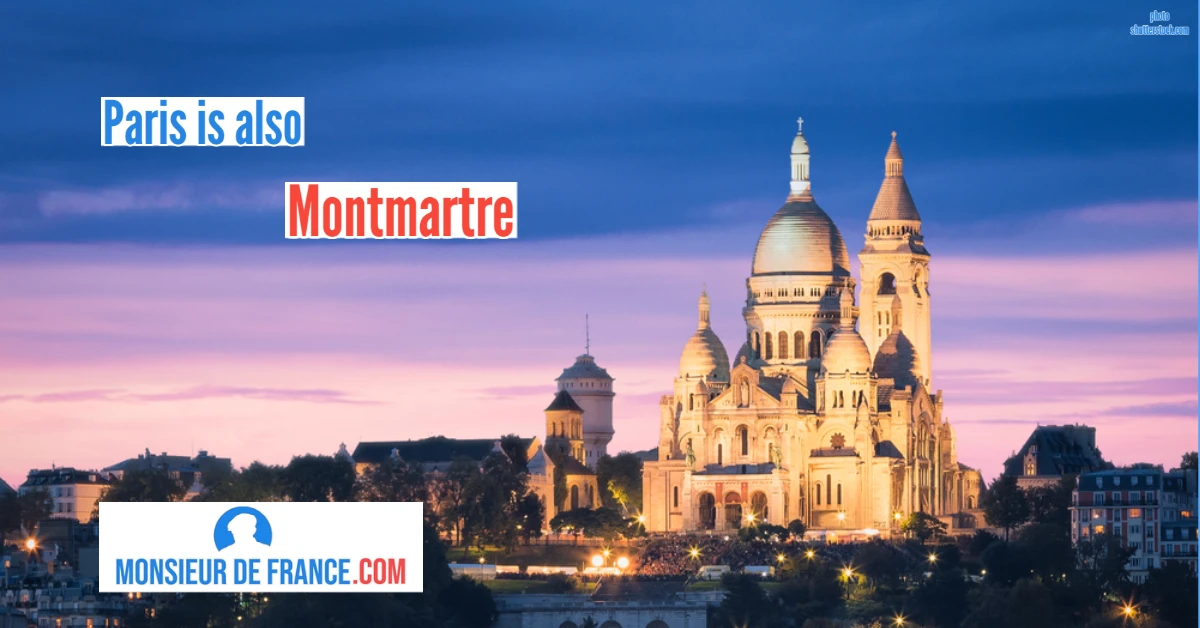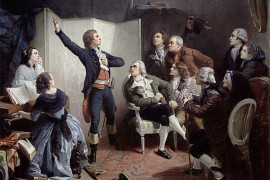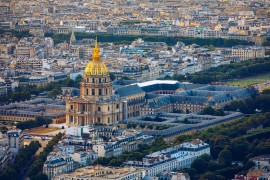What is the Arc de Triomphe?
The Arc de Triomphe in Paris one evening. Image chosen by Monsieurdefrance.com: Hervé Lagrange from Pixabay
A place rich in art and symbols
Built between 1806 and 1836, the Arc de Triomphe de l'étoile crowns the avenue des champs-elysées. Because of its location, it is situated in the center of 12 of the main avenues, in the 8th, 16th and 17th arrondissements of Paris. It measures 49.54 meters high, 44.82 meters wide and 22.21 meters deep. If one were to lift it, it weighs more than 50,000 tons for the emerged part, and even more than 100,000 tons including the foundations. It cost the French more than 9 million gold francs. Owned by the City of Paris but managed by the Centre des Monuments Nationaux, it welcomes nearly 3,000,000 visitors per year . Sculpted on all sides of the exterior, it is adorned with the names of many battles won by the French armies, mainly during the reign of Napoleon. The triumphal arch is composed of several arches, including two large ones and several high and low reliefs. It was crowned for a long time by a sculpted group that was supposed to be made of bronze but was never. It was removed at the end of the 19th century. The frieze is sculpted and represents on one side "the departure of the armies", "the return of the armies" and an exaltation of the Nation.
Detail : The departure of the volunteers of 1792 (or the Marseillaise) by François Rude on the Arc de Triomphe in Paris. Photo chosen by Monsieurdefrance.com : Shutterstock.com
A sacred place for the French.
The Unknown Soldier has been buried under the Arc de Triomphe since 1921, and France pays tribute to him during patriotic ceremonies. Every evening, the flame of the Unknown Soldier is rekindled. A rite that has never ceased, even during the war. Around 6:30 p.m., after rekindling the flame, the Marseillaise is sung. During major national ceremonies such as November 11 or May 8, it is the President of the Republic who makes this gesture in the presence of the various constituted bodies (elected representatives of the two Assemblies, the army, etc.).
The moving story of the selection of the unknown soldier is here
The Arc de Triomphe, its sculptures and symbols.
The high reliefs of the Arc de Triomphe :
Visible from afar, they are 4 in number and appear on the two widest sides of the triumphal arch. The most known are those which one sees since the avenue of the Champs-elysée namely:
The departure of the volunteers of 1792
otherwise called "la Marseillaise".
Made by François Rude (1784-1855)
(on the right on the facade of the Champs-Elysées).
It represents the mobilization of the French to defend the Fatherland in danger at the time of the French Revolution and the war unleashed by neighboring nations. Guided by the genius of War (recognized by his wings and his sword), the volunteers, of all ages, rush to defend France.
The departure of the volunteers of 1792 (or the Marseillaise) by François Rude. Image chosen by monsieurdefrance.com: Hans Rohmann from Pixabay
The triumph of 1810
By Jean Pierre Cortot (1787-1843)
(on the left side of the Avenue des Champs-Elysées).
Dedicated to Napoleon I, this high relief was realized by Jean Pierre Cortot (1787-1843). We recognize Napoleon I (1769-1821) emperor of the French, who wanted the creation of the Arc de Triomphe. It symbolizes the great year of the Emperor's reign which saw the battles won and his marriage to Marie-Louise of Austria.
The triumph of 1810 by Jean Pierre Cortot / Image chosen by monsieurdefrance.com: Hans Rohmann from Pixabay
The resistance
By Antoine Etex (1808-1888).
(To the right on the avenue de la Grande-armée side).
It shows a naked warrior who is ready to defend his country even if his family (an old man, a woman carrying a child) tries to convince him to give up. It was made after 1814, therefore after the moment when Russia and Austria conquered Paris. The genius of the Future dominates the high relief.
The Resistance by Antoine Etex. Image chosen by monsieurdefrance.com: by Hans Rohmann from Pixabay
The Peace
By Antoine Etex (1808-1888)
(On the left side of the avenue de la Grande-Armée).
Here, the soldier puts away his weapon, which means that Peace has arrived. He will be able to work. Agriculture is symbolized by the ploughman, the plow and the bull. The wife and child symbolize the family and the future. The group is dominated by the Roman goddess Minerva, wearing a helmet and holding a spear. She is the goddess of victory.
The Peace. High relief of the triumphal arch by Antoine Etex (1808-1888). Image chosen by monsieurdefrance.com: by WikimediaImages from Pixabay
The bas-reliefs.
They are located all around the Arc de Triomphe. 6 are located on the top. They represent great military moments of the end of the French Revolution and the Empire. We can see the funeral of General Marceau (by Henri Lemaire), the battle of Aboukir (by Seurre ainé), the battle of Jemappes (by Carlo Marochetti), the Bridge of Arcole (by Jean-Jacques Feuchère), the capture of Alexandria (by John-Etienne Chaponnière) and the Battle of Austerlitz (by Théodore Gechter). The top of the triumphal arch is crowned with an attic that alternates palms and medusa heads.
The triumphal arch how to get there ?
GPS address
The Arc de Triomphe is located at Place Charles de Gaulle 75 008 PARIS.
Never cross the Place de l'Etoile traffic circle on foot. Underpasses have been built to allow you to cross safely. There are 2 of them: one at the top of the avenue des Champs-Elysées and the other on the opposite side of the avenue de la Grande-Armée.
Metro
Lines 1, 2 and 6: Charles de Gaulle - Etoile station
Lines 1 and 9: Franklin Delanoe Roosevelt station
Lines 1 and 13: Champs-Elysées - Clémenceau station (about 15 minutes walk).
RER
RER line A : Charles de Gaulle - Etoile station.
BUS
Lines 22, 30, 31, 52, 73 and 93.
Cabs
Nearby stations on the Champs Elysées and in the 12 avenues.
Visits and website
The visits
You can enter freely under the arch and discover the slab of the Unknown Soldier.
You can also enter the Arc de Triomphe but you have to pay. There is a museum and, at the top, a panoramic terrace which allows you to see the whole avenue of the Champs-Elysées. You can see the Concorde (with the obelisk), the Louvre, the Tuileries garden. On the other side you can see the arch and the district of La Défense. Choose the evenings, the lights of the city are beautiful. The best is a winter evening, when the night falls early, you can see the Eiffel Tower sparkling. You need good legs because you have to climb 284 steps. However, a PMR / Handicap access is available by elevator at the southwest pillar.
A piece of advice : it is often cool, so bring warm clothes. Be careful, some objects (selfie sticks...) are forbidden and there is no luggage.
Schedules
The museum and the terrace are open, in general, from 10:00 to 22:30 (last access 21:45). In summer (April-September), the museum closes at 11pm.
Rates
Once again, access to the Sacred Paving Stone and the walk under the Arc de Triomphe are free. What you have to pay for is the entrance to the Museum and the panoramic space on the roof.
The museum is closed The best is a winter evening, when the night falls early, you can see the Eiffel Tower glittering.
Cost:
13 euros (2022).
Free for children under 26 (European Union citizens).
It is advisable to make a reservation before coming on the official website which is here .
Always ask before you go to a tourist site. The prices we indicate are indicative.
Website infos Geo.
The Arc de Triomphe de l'Etoile is a property of the City of Paris managed by the Centre des Monuments Nationaux. The official website is rich in history and you can discover it by browsing it. We advise you to go and see it.
Sorry for the translation errors, our translator is sitting on a terrace on the Champs-Elysees and we don't know when he will return. We did the best we could.

